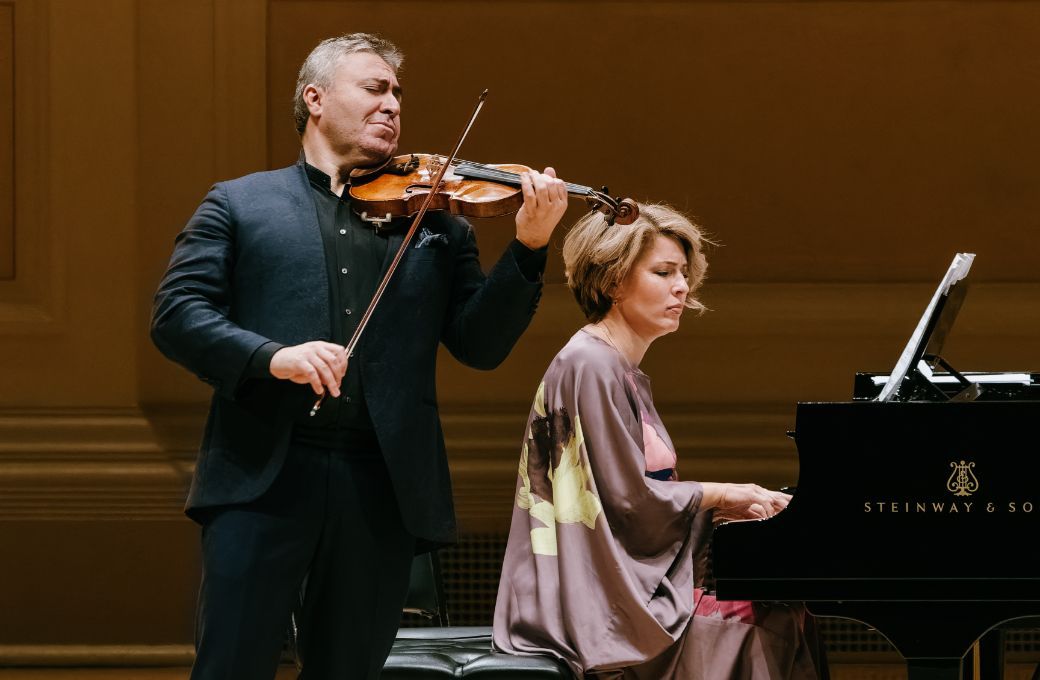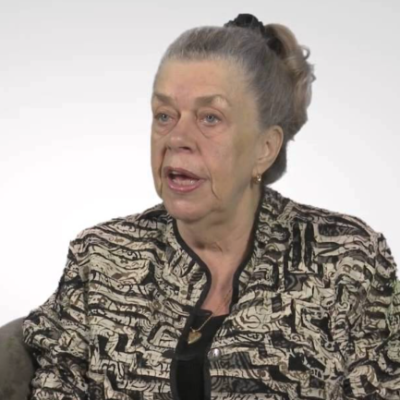The first half of this recital by Maxim Vengerov and Polina Osetinskaya, centering on works written for the Hungarian violinist Joseph Joachim by his friends Clara and Robert Schumann and Johannes Brahms in 1853, affirmed that year as conspicuously creative for all three composers. The program opened with Clara's Three Romances. From the first notes, the ready rapport between violinist and accompanist was apparent. Vengerov’s astonishing technique and unflagging passion suffused the opening Andante molto in D flat with melancholy as Osetinskaya’s gently rocking piano rhythms provided perfectly graceful support. After a somber start, the central Allegretto became more cheerful, enlivened by Vengerov’s agile ornamentation of the violin theme. The long-breathed lyricism of the final Leidenschaftlich schnell grew in intensity before slowing down and beautifully resolving in violin's lower register, accompanied by deep chords on the piano.

Next came Brahms’ Scherzo movement from the ambiguously titled F–A–E Sonata, composed jointly with Robert Schumann and Albert Dietrich. Vengerov and Osetinskaya’s enthusiastic and assertive playing infused the brief (six minutes), robustly lyrical piece with exhilarating energy.
The first half of the recital ended with Robert’s Third Violin Sonata in A minor, which he created by adding two new movements to his Intermezzo and Finale contributions to the F–A–E Sonata to produce a work that was completely his own. For reasons unknown, Clara neglected to include the piece in the edition of her husband’s complete works, the score remaining unpublished until 1956. Vengerov and Osetinskaya embraced this dramatic work with both assertiveness and subtlety. The violinist’s blazing double stops and acrobatic leaps in the unnerving melody of the opening movement were followed by tremendously ardent playing in the Scherzo, where his instrument seemed to weep with longing. The ensuing Intermezzo brimmed with lyricism and repose, and in the radiant and graceful Finale, the pianist made the filigree writing seem completely effortless.
The second half was devoted to Prokofiev. The Five Melodies were initially composed as a set of vocalises for Ukrainian-American mezzo-soprano Nina Koshetz, who premiered the wordless songs in New York in 1921. Four years later, Prokofiev reworked them for violin and piano as a concert vehicle for himself and violinist Paul Kochanski. As performed by Vengerov the opening Andante had a steady forward movement, which carried through the Lento, propelled by Osetinskaya’s rocking accompaniment. The Animato, ma non allegro was most seductive in its undulating upper register passages, the light-hearted Allegretto leggero delightfully nimble throughout. The concluding Andante non troppo, highlighting Prokofiev’s melancholic pathos alongside his tongue-in-cheek vivaciousness, was the most impressive of the five movements.
Prokofiev originally conceived his 1943 Second Violin Sonata as a work for flute and piano, but soon arranged it for violin and piano for David Oistrakh, who premiered the work with Lev Oberin the following year. On this occasion, Vengerov, admirably supported by Osetinskaya, delivered an inspired performance. He employed his expressive vibrato technique to bring out all the languorous beauty of the opening Moderato. The Scherzo crackled with rhythmic vitality as the violin and piano danced nimbly round each other in quick-paced triple time, and the wry, wistful Andante, perfectly conveyed, was followed by an irresistibly spirited Allegro con brio finale.
In response to the long, heartfelt ovation, Vengerov introduced the first of three encores: a rapturous rendition of a piano and violin arrangement of Rachmaninov’s Vocalise. This was followed by Prokofiev’s familiar March from The Love for Three Oranges, and then, in commemoration of the 150th anniversary of Rachmaninov’s birth, a stunningly beautiful rendition of the 18th variation of his Rhapsody on a Theme of Paganini.


